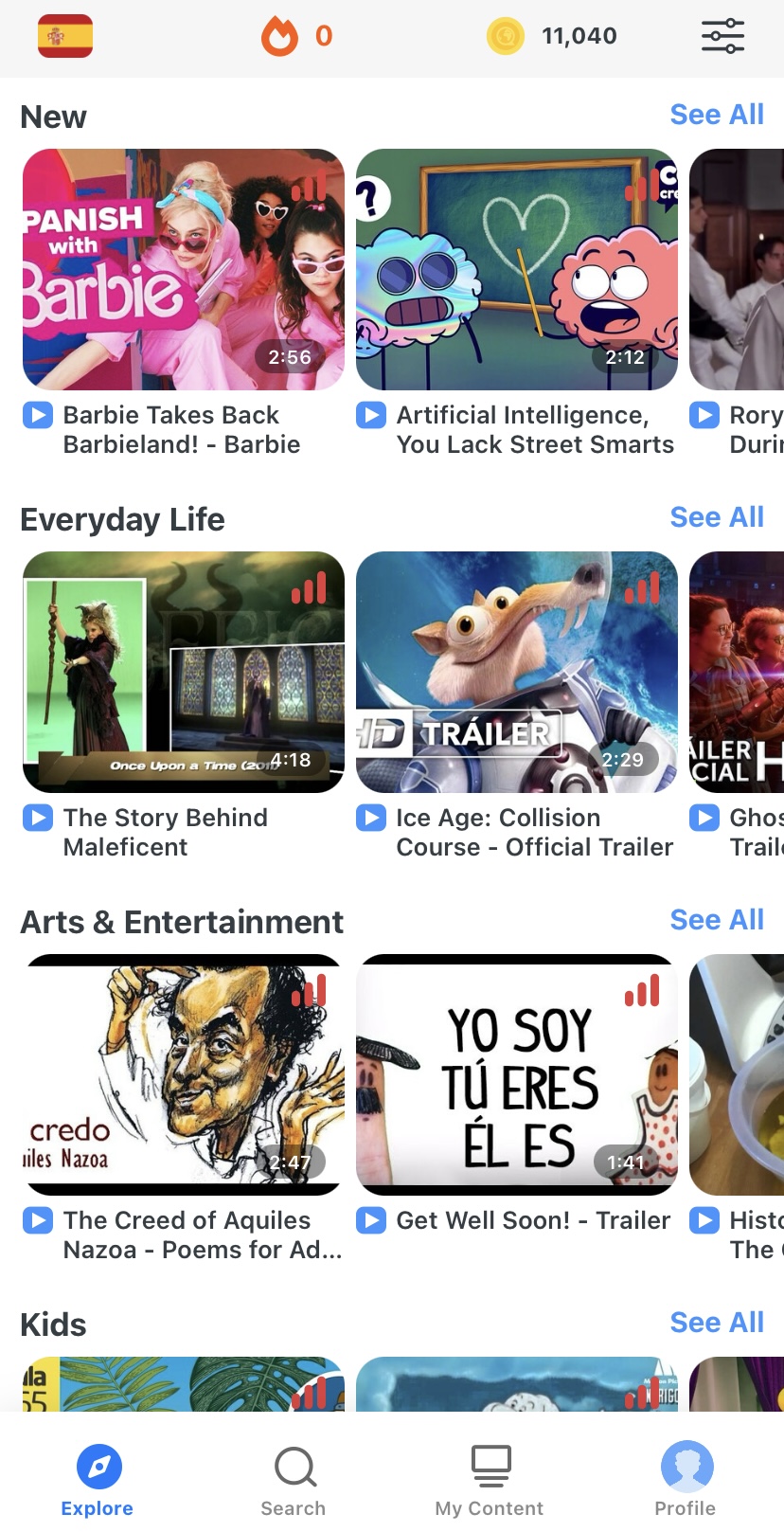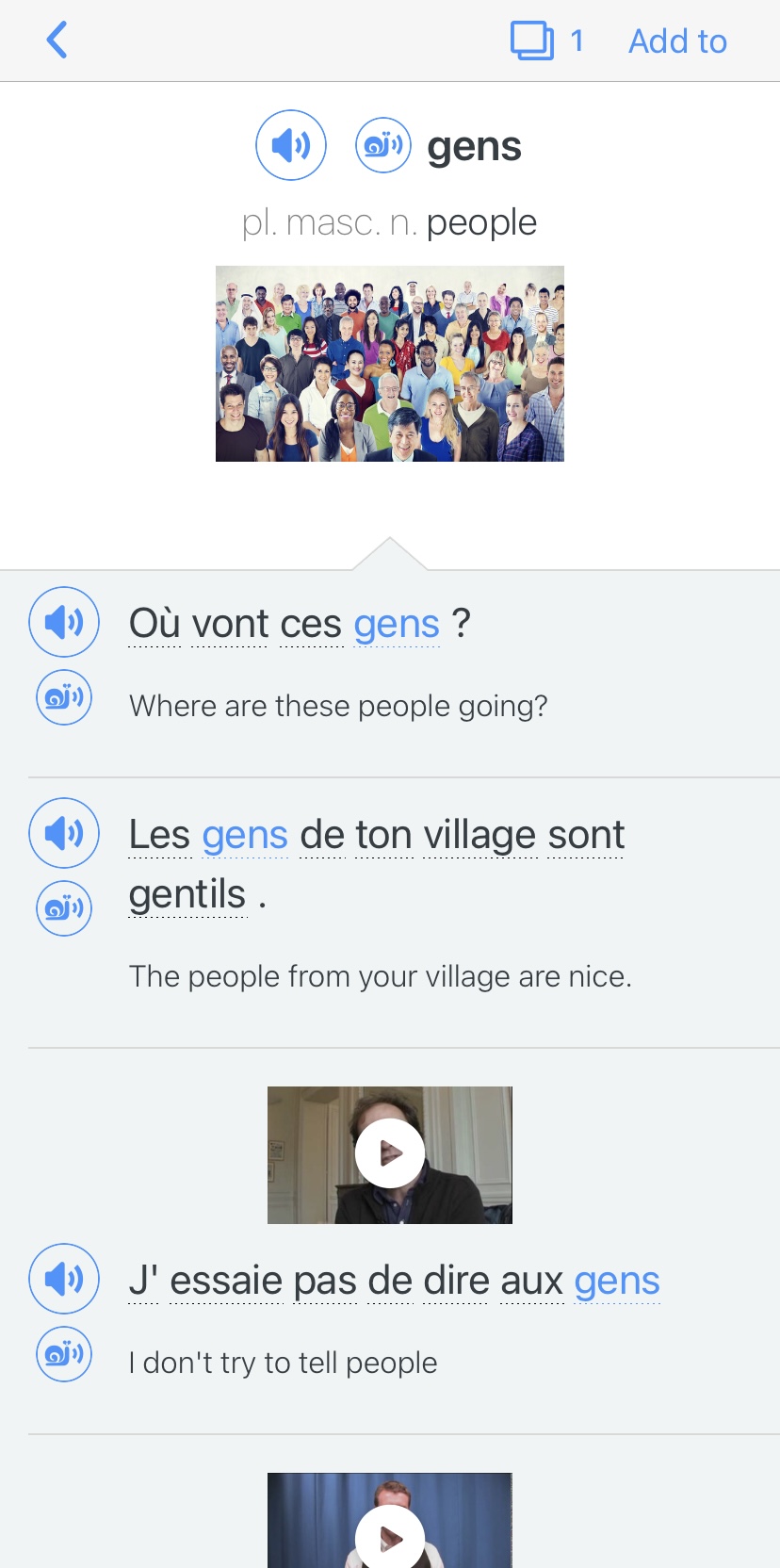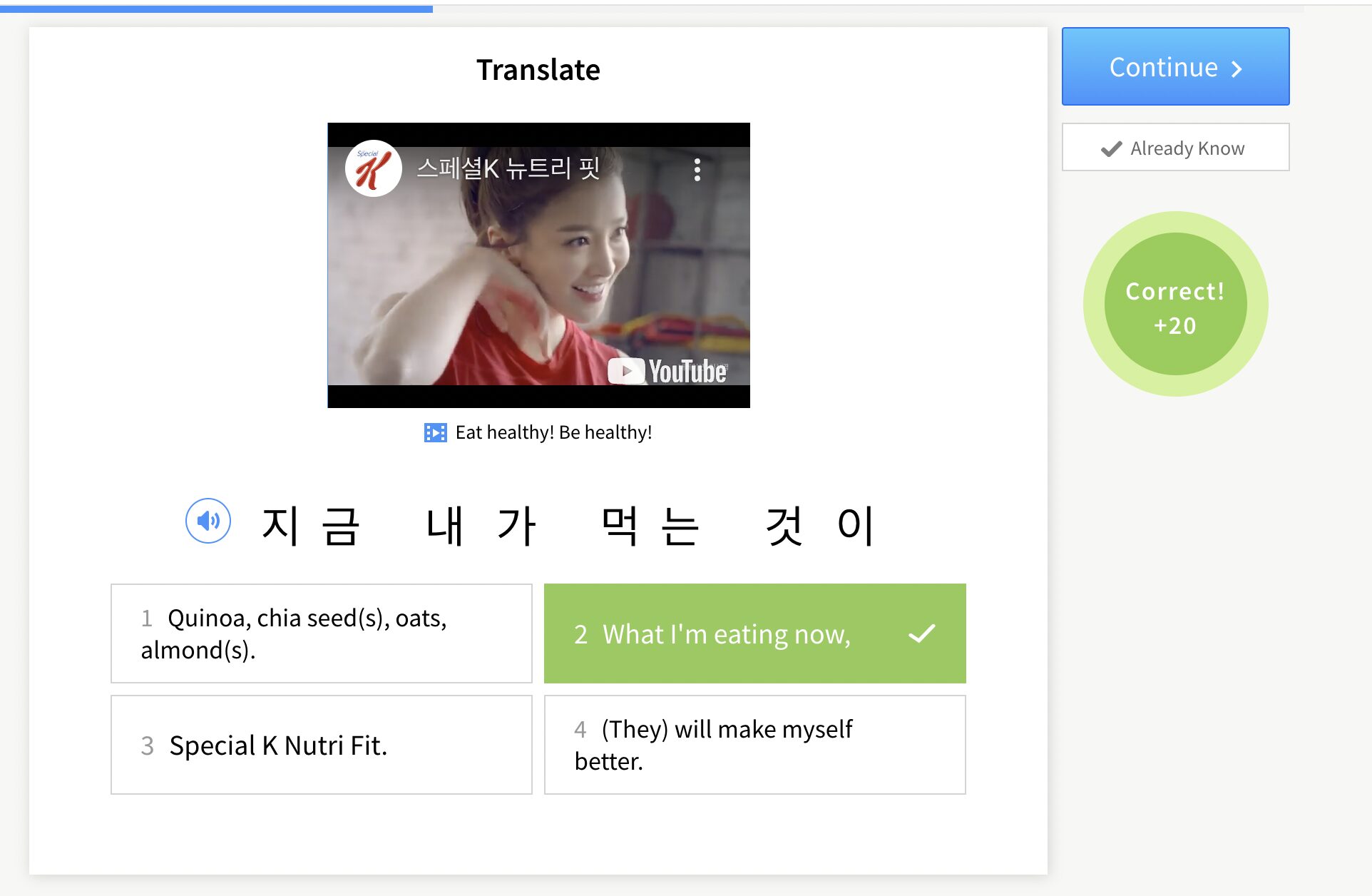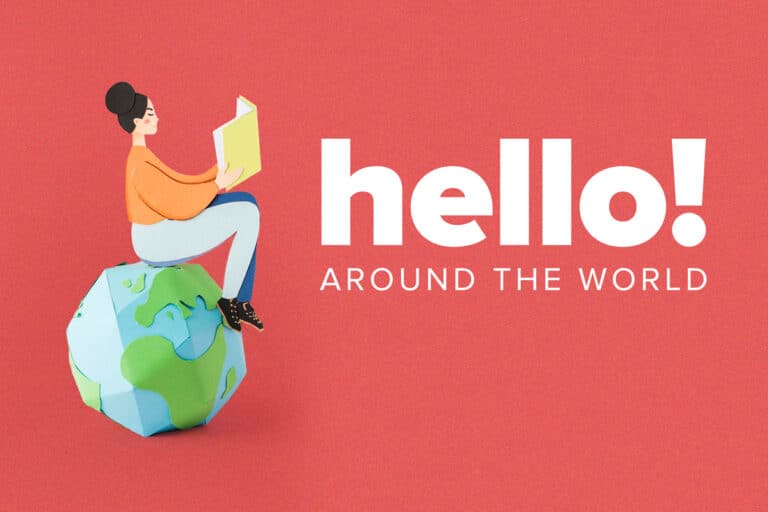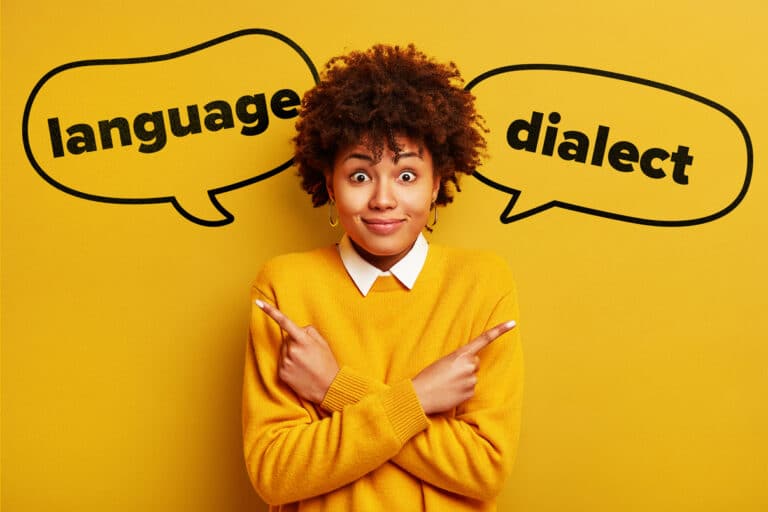10 Examples of Unique Body Language from Different Cultures

Body language is the act of communicating using anything other than your words. People all around the world use their bodies to express themselves: greeting someone with a hug or a handshake, moving into or away from someone else’s personal space, smiling, frowning, waving, pointing, dancing and so much more.
But gestures that mean one thing in your part of the world can mean the exact opposite somewhere else. In this post, we’ll look at 10 examples of body language in different countries—a small sample of the big pool of non-verbal communication.
Download: This blog post is available as a convenient and portable PDF that you can take anywhere. Click here to get a copy. (Download)
1. Bowing in Korea
While Western countries reserve bows for the end of a stage performance, bowing in many East Asian countries—such as Korea, Japan and China—is part of basic etiquette to show respect and/or gratitude.
In Korea, you bow when initially meeting a person, as well as to say “Hello,” “Goodbye,” “Thank you” and “I’m sorry.”
Generally, the lower you bow, the more respect and deference you show the other person. The longer you keep your head bowed signifies your seriousness.
Depending on where you go, of course, the rules and etiquette for bowing may differ; sometimes they even vary between generations!
2. “One” in Germany
You probably use your fingers to count things, like signaling how many mugs of beer you want at a bar, for instance.
In the US, the number “one” is signified by the pointer finger. In Germany—and a few other European countries, like France and Italy—they start counting with the thumb, and the pointer finger is therefore “two.”
Show the waiter a pointer finger, and he might think that you’re saying “two” and bring you a pair of those huge German beer mugs!
In fact, in the bar scene of the WWII movie “Inglorious Basterds,” an undercover American officer gives himself away by signaling the waiter with his pointer, middle and ring fingers. “Three,” in the German way of counting, is the thumb-pointer-middle finger combo!
3. Head Shaking in India
In Western cultures, when we say “yes,” we nod our heads up and down. “No” involves swinging the head from left to right.
People from India and other South Asian countries, however, use their heads to express so much more than a simple “yes” or “no.” In India, “yes” is expressed by tilting the head from side-to-side towards the shoulders—the faster the shake, the more certain the “yes” is.
This gesture can also be used during a conversation to indicate that the listener is paying attention and being agreeable. It can also be a sign of courtesy and respect. It can really mean a lot of things!
4. The “Pinecone” in Italy
Italians are known for their expressive body language. There are probably hundreds of recognizable Italian hand gestures, but the most quintessential of them is the “pinecone.”
With palms up, the Italian “pinecone” is formed by bringing the tips of all your fingers to a single point. Rock your wrist back and forth, and you have the most recognizable hand gesture in the Italian world.
Think of it as the accompanying gesture for asking questions—especially when you’re utterly confused or desperate for the answer, like “What were you thinking?!” or “What’s happening?!”
5. “So-so” in France
As connoisseurs of the good life, the French have high standards for almost everything (not just food and fashion), so you might often hear them say “Comme ci comme ça,” which is the equivalent of “so-so” in English.
If a French person is telling you how their day went and it was just okay—nothing really memorable or worthy of discussion—their “comme ci comme ça” phrase will often be coupled with a palm-down hand rocked from side to side, like a boat rocking back and forth.
6. Pointing at Your Nose in China
As the most prominent and central part of the face, the nose represents the self in Chinese and other East Asian cultures. In Chinese astrology, the nose symbolizes self-esteem, status and wealth.
So when a Chinese person refers to themself, they don’t point to the chest like many other cultures do. Instead, using the forefinger or thumb, they point to the nose.
To signify “me” or “I” when in China, point to the nose. And I mean your nose. Touching the nose of others is considered extremely rude, though there probably aren’t many places where it’s socially acceptable to boop someone else’s nose during a conversation!
7. Kissing Cheeks in Switzerland
Many countries in Europe and Latin America use cheek kisses as a way of greeting. In Switzerland, it’s three cheek kisses—starting with your right cheek.
The Swiss kiss is a common way to greet family and close friends, especially when it’s girl-and-girl or girl-and-boy. Between men, not so much—they usually do with a warm handshake, unless they’re really close.
New acquaintances are welcomed with a handshake also, but as the relationship deepens, this graduates to cheek kisses.
8. Thumbs Up in Iran
In many Middle Eastern cultures like Iran, Iraq and parts of Greece, the thumps-up gesture is basically the equivalent of giving someone the middle finger. Imagine that sturdy thumb and sitting on it, because that’s what the gesture is trying to say.
However, thanks to Hollywood movies, Facebook and other elements of popular culture disseminating in the Middle East, the thumbs-up gesture can sometimes just be a genuine thumbs up!
So how do you know if it’s meant in a positive or negative way? Maybe you never will. But it’s always better to assume it’s encouraging—just flash a smile and a nod of acknowledgment and be on your merry way. Everyone wins!
9. Eye Contact in Japan
In many countries, maintaining eye contact while you speak with someone signifies that you’re paying attention. (Think of a mother demanding “Look at me when I’m talking to you!”)
In Japan (and a few other East Asian cultures), however, eye contact can signal aggression and disrespect. In fact, many Japanese people are taught at an early age to look at peoples’ necks instead of their eyes.
These days in Japan, it’s becoming more socially acceptable to look people in the eyes when you’re talking to them, but in certain situations (like more formal encounters or conversations with older people), you may be in for a bit of awkwardness if you maintain eye contact for too long!
10. Counting in Russia
If you count on your fingers from one to five, chances are you started with a balled-up fist and gradually uncurled each finger as you went.
In Russia, people also count with their fingers, but instead of starting with a closed fist, they start with an open palm.
To count to five, Russians first open their palm, then (sometimes with the help of the pointer finger on their other hand) curl in their pinky finger, followed by the ring finger and so on. By “five,” they have a balled-up fist.
Various Aspects of Body Language
Facial Expressions, Head Movements and Eye Contact
The six generally accepted emotions—happiness, surprise, fear, disgust, anger and sadness—were once considered universal. But studies suggest that these are not so clear cut.
For example, while a computer algorithm was quite adept at deciphering the six emotions in Western (Caucasian) faces, the same algorithm applied to Asian faces falls somewhat short.
It turns out that people around the world express emotions through different levels of intensity and by engaging different facial muscles.
In the specific study noted above, Asian faces displayed lower emotional intensity than Western faces, as well as much overlap when registering surprise, fear, disgust and anger—which may make it hard for someone of Western origin to tell when someone of Asian origin is mad or scared, for example.
Head movements can also have different meanings in different cultures, so nodding to say “yes” might not always get you the reaction you expect!
If you’d like to see various gestures and facial expressions along with their spoken context, you can check out an immersion program such as FluentU to see how they really pair together.
FluentU takes authentic videos—like music videos, movie trailers, news and inspiring talks—and turns them into personalized language learning lessons.
You can try FluentU for free for 2 weeks. Check out the website or download the iOS app or Android app.
P.S. Click here to take advantage of our current sale! (Expires at the end of this month.)

Finger, Hand and Arm Gestures
No matter where you’re from, the default human being has 10 fingers split evenly between two hands—but different cultures use them in very different ways!
For instance, in the West a thumbs up expresses support or “OK”, a peace sign (the pointer and middle finger up) expresses peace and love and “flipping the bird” (middle finger up) expresses insult to the recipient. But these gestures can (and often do) mean something entirely different elsewhere in the world!
Even a gesture as seemingly universal as pointing at something with your aptly named “pointer finger” turns out to not be so universal after all. Some cultures prefer to “point” with their heads or noses. Other cultures use their thumb, an open hand or even their lips.
It’s safe to say that for every positive action or gesture that you know, there are places in the world where it’s considered crude, rude or gross.
Proximity, Orientation and Physical Contact
The amount of physical contact you share with another person is highly dependent on one’s culture.
Some cultures have an easy grace toward men kissing other men on the cheek, while other cultures would make do with handshake or a manly fist bump. These are simply different ways of expression, much like apples are manzanas in Spanish and pommes in French.
Further, a “Touchability Index” ranked Europeans on how much they like to be touched—Finns top the list while Brits close it out, preferring more personal space.
Indeed, the size of your “personal space” bubble is culturally determined—this study found that South Americans generally require less personal space than most Asians, for example.
The study of body language, much like the study of language itself, is a rich field!
By now, you should understand how important (and different) body language is for different cultures.
Learning the specific gestures and movements for the particular language you’re studying is a big help in communicating with clarity and effectiveness.
Download: This blog post is available as a convenient and portable PDF that you can take anywhere. Click here to get a copy. (Download)
And One More Thing...
If you're like me and love learning languages through real-world content, FluentU is a game-changer. With FluentU, you're not just memorizing words—you’re learning how native speakers actually use them.
With our newest feature, you can now bring FluentU’s interactive tools to any subtitled content on YouTube or Netflix—or even import YouTube videos directly into your FluentU account!
You’ll also get access to a huge variety of content in our curated video library, from movie trailers to news clips, music videos, and more. The best part? FluentU makes this native-language content accessible for learners of all levels.
While you watch, you can tap on any word in the interactive subtitles to see a definition, an image, audio, and useful example sentences. Want to practice new words later? Add them to your flashcards with one click. No more pausing to look up and write down new words!
And FluentU helps you actually remember what you learn with personalized quizzes, plenty of example sentences, and extra practice with the words you find difficult.
Ready to start learning in a more natural, immersive way? Try FluentU on your computer or tablet, or download the FluentU app from the App Store or Google Play. Click here to take advantage of our current sale! (Expires at the end of this month.)


